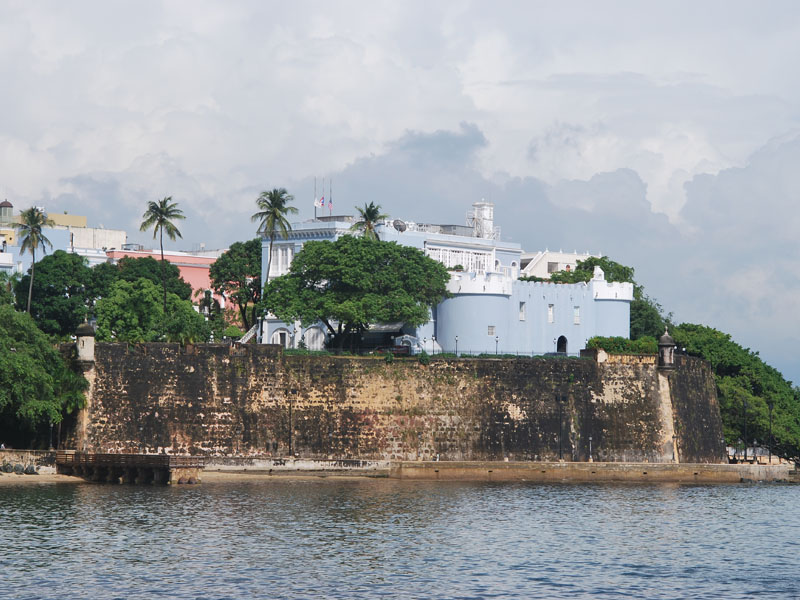|
Casa Blanca (San Juan)
Casa Blanca is a house museum located in Old San Juan within the historic colonial section of the capital of Puerto Rico. History Built in 1521, it served as the first fortification of the San Juan islet. It was the residence for Juan Ponce de León and his family, and also his cousins, although de Leon died in an expedition to Florida without ever getting to occupy the structure. It was used as the residence of his descendants, until the mid-18th century. As a fortification it served mostly as a refuge in times of attack from Taino rebels. The short rebellion ended peacefully after a commission of Caciques (Chieftains) negotiated peace. The house was built in wood but was destroyed by fire and rebuilt in stone and masonry. Casa Blanca, it was the first governor's residence in PR when the capital was moved to the Islet of San Juan in 1521. Refurbished along 500 years it was the governors' residence until the mid 1700s when the Castle-Fortress of St. Catherine was modernised a ... [...More Info...] [...Related Items...] OR: [Wikipedia] [Google] [Baidu] |
La Fortaleza
La Fortaleza (lit., "The Fortress" ) is the official residence of the governor of Puerto Rico. It was built between 1533 and 1540 to defend the harbor of San Juan. The structure is also known as Palacio de Santa Catalina (Saint Catherine's Palace). It is the oldest executive mansion in continuous use in the New World. It was listed by UNESCO in 1983 as part of the World Heritage Site "La Fortaleza and San Juan National Historic Site". During the 1640 reconstruction, the chapel of Santa Catalina, which originally stood outside the walls, was integrated into the walls of the structure, resulting in the alternate name Santa Catalina's Castle. The structure La Fortaleza was the first defensive fortification built for the city of San Juan, and the first of a series of military structures built to protect the city which included the Fort San Felipe del Morro and the Fort San Cristóbal. The construction was authorized by Charles V, Holy Roman Emperor as a defense against attacks fr ... [...More Info...] [...Related Items...] OR: [Wikipedia] [Google] [Baidu] |
16th-century Establishments In Puerto Rico
The 16th century begins with the Julian year 1501 ( MDI) and ends with either the Julian or the Gregorian year 1600 ( MDC) (depending on the reckoning used; the Gregorian calendar introduced a lapse of 10 days in October 1582). The 16th century is regarded by historians as the century which saw the rise of Western civilization and the Islamic gunpowder empires. The Renaissance in Italy and Europe saw the emergence of important artists, authors and scientists, and led to the foundation of important subjects which include accounting and political science. Copernicus proposed the heliocentric universe, which was met with strong resistance, and Tycho Brahe refuted the theory of celestial spheres through observational measurement of the 1572 appearance of a Milky Way supernova. These events directly challenged the long-held notion of an immutable universe supported by Ptolemy and Aristotle, and led to major revolutions in astronomy and science. Galileo Galilei became a champion o ... [...More Info...] [...Related Items...] OR: [Wikipedia] [Google] [Baidu] |


